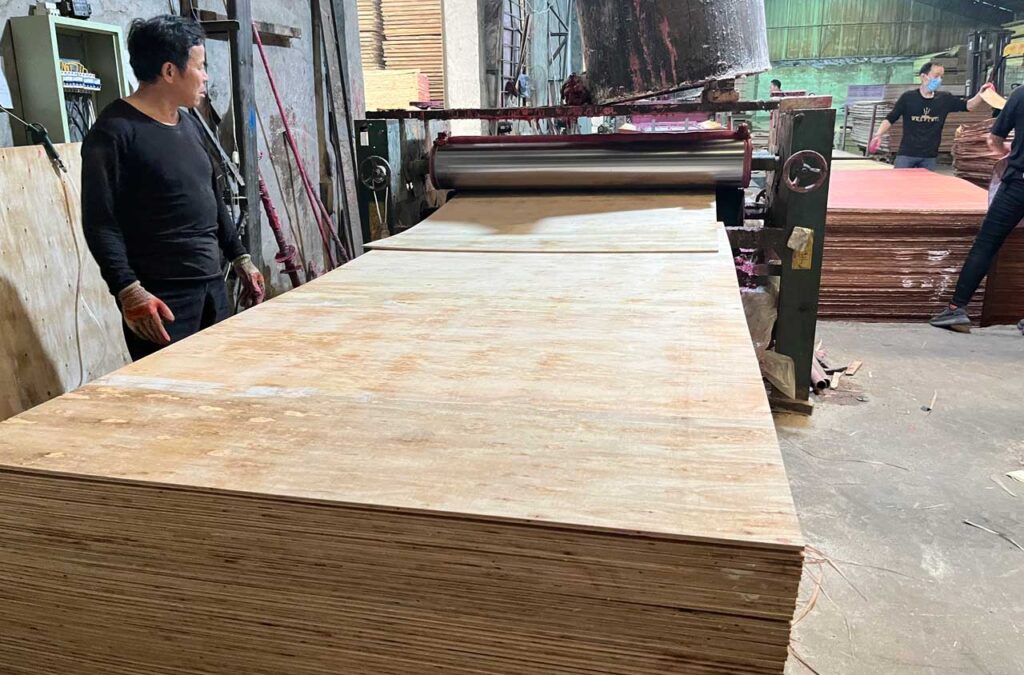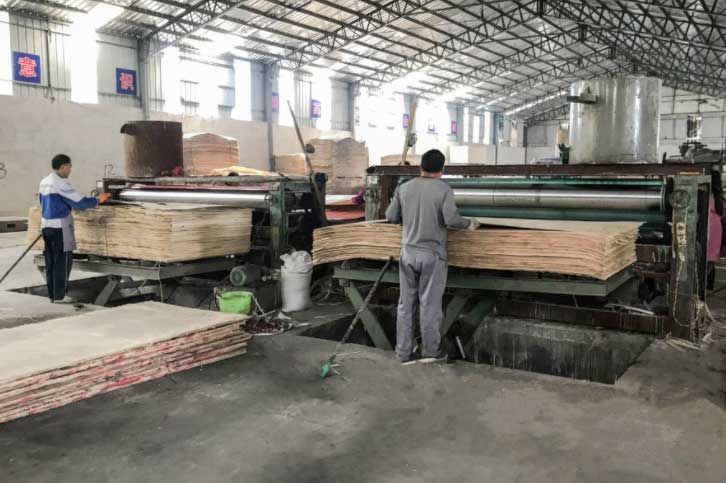- +86 19853927722
- info@yachenwood.com
- Mon - Fri: 9:00 - 18:30

The color of the furniture board includes natural wood grain surface, melamine paper, and HPL surface, and different decorative layers are selected according to different uses. The furniture boards used for indoor and outdoor furniture are also different, and outdoor needs to be waterproofed.
Furniture board is the board used to make bamboo and wood furniture, including solid wood board, bamboo board, plywood, blockboard, density board, particle board. The board-wood furniture is solid wood furniture in appearance, and the natural texture, feel and color of the wood are exactly the same as those of the solid wood furniture, but in fact, it is the furniture made of solid wood and solid wood particle boards.





Plywood is a versatile building material. It is made of thin layers of wood that are glued together under heat and pressure. It can be used in many different ways, including for furniture, cabinet doors, table tops and wall panels. Plywood is an engineered wood widely used in building and construction. It can be easily cut, sanded and painted.
Common plywood are three plywood, five plywood, nine plywood and twelve plywood. Plywood can improve the utilization rate of wood and is a main way to save wood. Plywood has common defects such as low bonding strength bubbling and local opening, and plywood warping, so it is more used to make oil-mixed front or back.
The plywood used in furniture decoration generally uses E1 glue, which can meet the national standard. Packaging plywood, not easy to open glue, not easy to break. The toughness and strength are more than 3 times that of solid wood.
There are many boards for making office furniture, for example: particleboard, blockboard and plywood, etc. These three boards are collectively referred to as “wood-based panels” by the world. Some time ago, we have introduced particleboard and blockboard. Today, Yachen plywood manufacturer will introduce the last kind of wood-based board – plywood.
Plywood is also widely used in office furniture. It has the advantages of large format, small thickness, beautiful wood grain, smooth surface, good dimensional stability, high strength and easy processing. Because of this, people like to use plywood to make office furniture products such as panel filing cabinets, drawer bottoms and panel conference tables.
Cost: An important advantage of plywood is its low cost relative to other building materials. Solid wood is very expensive. It also takes a lot of effort to make wood joints to create wide solid wood boards. Plywood, on the other hand, can be made to any size we need because they are engineered wood. When it comes to flooring, only laminate is better than plywood in terms of pricing related to wood floors. Most other products, especially hardwoods, tiles, and bamboo, are more expensive than plywood.
Lightweight: Plywood has a high strength-to-weight ratio, which means it is relatively light but also durable. This makes it easier to transport than other materials like solid wood or steel.
EASY TO WORK: When building furniture or cabinets, you can easily cut plywood to the desired size. The assembly and installation of plywood does not require any rocket science. Efficiently cut plywood into small pieces, polish, lay on the ground, secure with screws or adhesive, then paint or polish as needed.
Better yet, you can buy plywood from a supplier and cut it to your specifications. This greatly reduces setup time and expense.
It is also easy to repair plywood furniture. If you see part of the plywood going bad, you can easily remove it and replace it with a new one.
Can be used in various environments: Due to its low shrinkage and expansion rate, plywood can be used in cold and hot environments. It also does not break easily due to environmental changes.
Also, it is more waterproof than competitors such as oak or other cheap woods. That’s because the surfaces of the wood are tightly compressed together, and there are no areas other than the edges that can absorb moisture.
A good finish: There are many ways to improve the look and texture of plywood without causing problems. You can stain or completely paint the furniture to achieve the look you want.
Not durable: Plywood is a fragile product that is barely self-sufficient on its terms. It gets stronger when placed on a surface, but it still lacks the long-lasting sturdiness of hardwoods and bamboo.
Soft: It is soft compared to other expensive woods like teak. Due to its softness, it is susceptible to scratches and other kinds of deterioration. When you drop anything sharp on the plywood, it will almost certainly leave unsightly dents. When your cat tries nails on a plywood floor, it may leave scratches.
There is nothing you can do to increase the resistance of plywood to damage from most scratches and sharp objects. Therefore, you should place it in an area without a lot of activity.
Low Resale Value: Unlike furniture made from expensive wood, plywood items have a very low resale value. If you use plywood for your floors, you may have problems when selling the property. Due to its defects, plywood may not be acceptable as a flooring product in certain circumstances. So, when it comes time to resell your home, replacing it with a traditional flooring material such as laminate or hardwood can be a hurdle.
Other disadvantages include that it is not very resistant to compression or shock. Another disadvantage is that during manufacturing and shipping, there can be problems with burning through the veneer due to the heat applied when gluing the layers together to build the large plywood.
1. Because of the adhesive layer, the tool is easy to become blunt when sawing, so pay attention to this aspect.
2.the slightly thinner plywood is easy to bend and deform, and it should be reasonably improved or eliminated by using the appropriate structure.
1. Look at the sign.
You can look at the lower right corner or side of each plywood backboard, which is usually stamped with non-fading ink to indicate the type, grade, formaldehyde release level, production code, inspector code and production date of the plywood.
2. Look at the label.
Each type of plywood has a label. You can look at the manufacturer’s name, address, trademark, specification, type, and formaldehyde emission level marked on the plywood to see if the labeled information is consistent and correct.
3. Both sides of the plywood.
The front side of the plywood is smooth and flat, and there is no sticky feeling when touched by hand; the back side is not too rough.
4. Check whether the plywood is degummed.
How to see it? When selecting, you can tap various parts of the plywood with your hands. If the sound is crisp and uniform, it means the quality is very good; on the contrary, if the sound is dull and uneven, it means that the plywood has already appeared. Degumming phenomenon.
5. Finally, you can look at the appearance of the plywood.
Some plywood is made by pasting two veneers with different textures together, so remind everyone that when purchasing plywood, you must pay attention to whether the seams of the plywood are tight and whether there are unevenness. If you use those loosely glued and untidy plywood to make office furniture, the resulting product will be ugly.
Plywood is a versatile building material. It is made of thin layers of wood that are glued together under heat and pressure. It can be used in many different ways, including for furniture, cabinet doors, table tops and wall panels. Plywood is an engineered wood widely used in building and construction. It can be easily cut, sanded and painted.
But like all materials, it has its pros and cons. There are many types of plywood that can be used for different purposes. It’s important to know the difference between them and which one you should use in each application. Here are some advantages and disadvantages of plywood.
We will contact you within 1 working day, please pay attention to the email with the suffix “@yachenwood.com”.